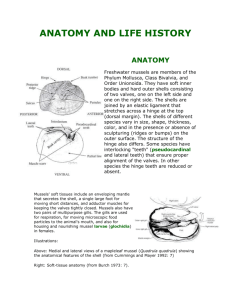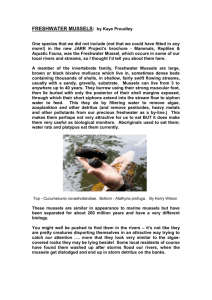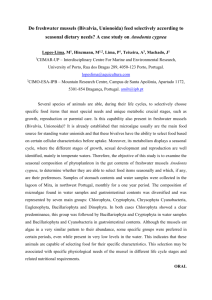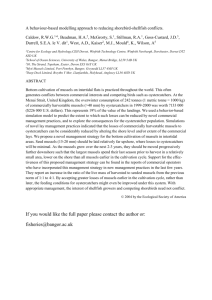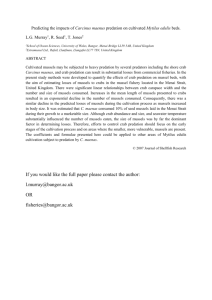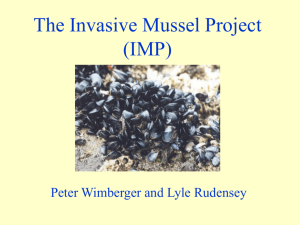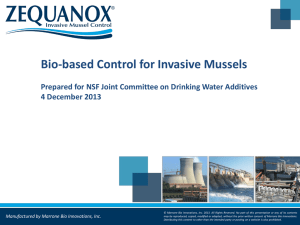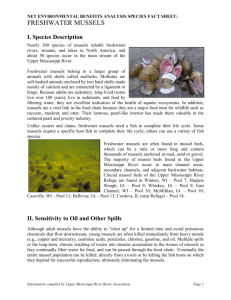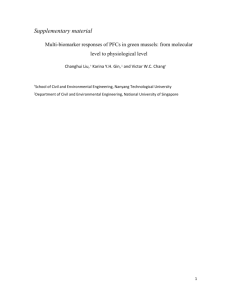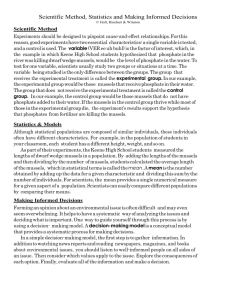effects of copper nanoparticles in mytilus galloprovincialis
advertisement
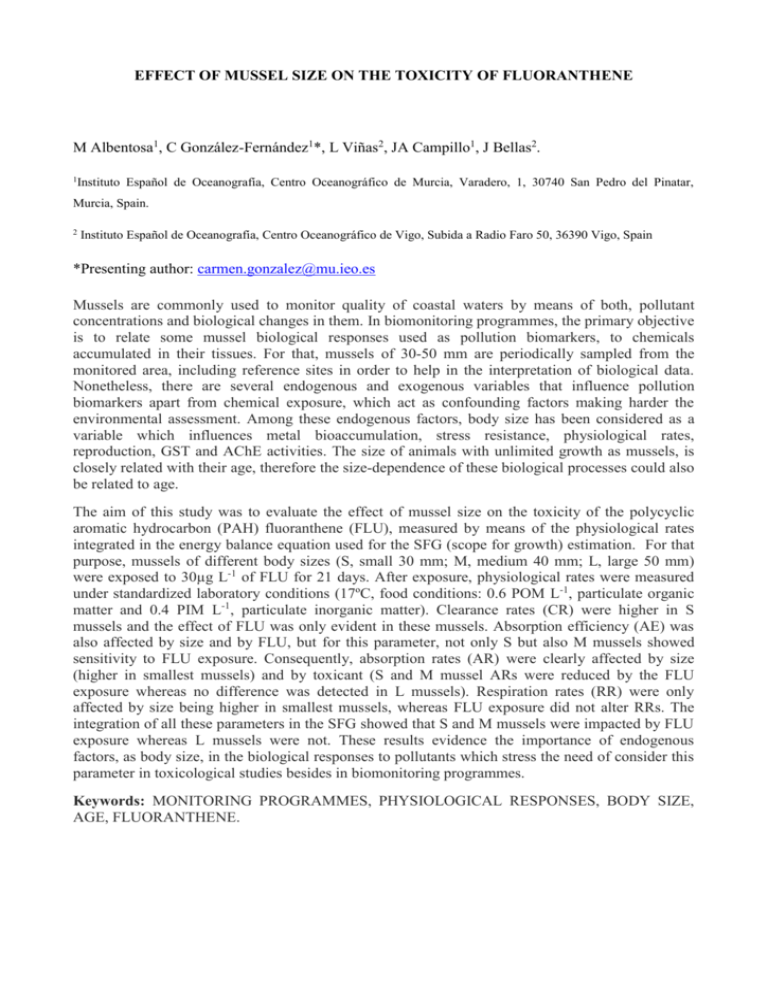
EFFECT OF MUSSEL SIZE ON THE TOXICITY OF FLUORANTHENE M Albentosa1, C González-Fernández1*, L Viñas2, JA Campillo1, J Bellas2. 1 Instituto Español de Oceanografía, Centro Oceanográfico de Murcia, Varadero, 1, 30740 San Pedro del Pinatar, Murcia, Spain. 2 Instituto Español de Oceanografía, Centro Oceanográfico de Vigo, Subida a Radio Faro 50, 36390 Vigo, Spain *Presenting author: carmen.gonzalez@mu.ieo.es Mussels are commonly used to monitor quality of coastal waters by means of both, pollutant concentrations and biological changes in them. In biomonitoring programmes, the primary objective is to relate some mussel biological responses used as pollution biomarkers, to chemicals accumulated in their tissues. For that, mussels of 30-50 mm are periodically sampled from the monitored area, including reference sites in order to help in the interpretation of biological data. Nonetheless, there are several endogenous and exogenous variables that influence pollution biomarkers apart from chemical exposure, which act as confounding factors making harder the environmental assessment. Among these endogenous factors, body size has been considered as a variable which influences metal bioaccumulation, stress resistance, physiological rates, reproduction, GST and AChE activities. The size of animals with unlimited growth as mussels, is closely related with their age, therefore the size-dependence of these biological processes could also be related to age. The aim of this study was to evaluate the effect of mussel size on the toxicity of the polycyclic aromatic hydrocarbon (PAH) fluoranthene (FLU), measured by means of the physiological rates integrated in the energy balance equation used for the SFG (scope for growth) estimation. For that purpose, mussels of different body sizes (S, small 30 mm; M, medium 40 mm; L, large 50 mm) were exposed to 30µg L-1 of FLU for 21 days. After exposure, physiological rates were measured under standardized laboratory conditions (17ºC, food conditions: 0.6 POM L-1, particulate organic matter and 0.4 PIM L-1, particulate inorganic matter). Clearance rates (CR) were higher in S mussels and the effect of FLU was only evident in these mussels. Absorption efficiency (AE) was also affected by size and by FLU, but for this parameter, not only S but also M mussels showed sensitivity to FLU exposure. Consequently, absorption rates (AR) were clearly affected by size (higher in smallest mussels) and by toxicant (S and M mussel ARs were reduced by the FLU exposure whereas no difference was detected in L mussels). Respiration rates (RR) were only affected by size being higher in smallest mussels, whereas FLU exposure did not alter RRs. The integration of all these parameters in the SFG showed that S and M mussels were impacted by FLU exposure whereas L mussels were not. These results evidence the importance of endogenous factors, as body size, in the biological responses to pollutants which stress the need of consider this parameter in toxicological studies besides in biomonitoring programmes. Keywords: MONITORING PROGRAMMES, PHYSIOLOGICAL RESPONSES, BODY SIZE, AGE, FLUORANTHENE.

